During the first two hours of India travel, we had already seen an elephant, ox, monkey, thick smog, endless vehicles, and a good chunk of the 1.2 billion people of the country. If I tell you this article is about the third hour in India, what the heck will it cover?
Easy: The inadvertent modern art created by walls, doors, trash, and laundry in the Paharganj neighborhood of Central Delhi.
Our first activity of the day, after grinding through the riot-slowed traffic of New Delhi, was a walking tour of the Paharganj neighborhood of Central Delhi, famous (or infamous) for being a warren of budget Delhi accommodations and markets.
Since the Mughal era in the 17th and 18th century (what a romantic term “Mughal Era” is!), Paharganj was a central marketplace of the Delhi area. Now, it is a melting or mushing-together pot of locals with domestic and foreign tourists. Plus — let’s be honest — a lot of dogs and litter. And a “Hair Saloon!” See the photo below for proof of all four.
In this alleged “Hair Saloon,” I picture cowgirls in saris lassoing horses (as harming cattle is a violation of Hindu principles) while doling out buzz cuts.
Let us now discuss the inadvertent modern art created by the walls, doors, and streets of Paharganj. In college, I attended a photo exhibit by a young woman who had been adopted from Colombia. The exhibit consisted of photos of walls the woman had seen when she finally went back to Colombia, and it was this exhibit that taught me that weathered walls become… art. Just look at how this played out during our travels in India:
Isn’t that wall, with its torn, layered posters, accidentally beautiful? And the colors and religious paintings India embraces excite the inadvertent art even more, especially melded with the emerald green and hornet yellow of the auto-rickshaws like this:
But let us not forget the effect of the doorways. Oooh, what doorways Paharganj exposed us to! Below, check out one that would be a perfect bustier for a German opera diva. (Don’t be put off by the almost-Swastika flag. That design is originally a Hindu symbol, which the Nazis stole and flipped, both physically and in meaning.)
Some of the doorways reminded me of tales from “1,001 Nights,” with their scalloped arches and peak, and I half-expected flying carpets to come soaring out of them. Below, look how the azure paint is creeping up to kiss the golden wall behind the motorcycle!
Then there were doorways with such ornate woodwork, one could have surely chipped off a block of it and sold it as art. But that would be a jerk move to hack off someone’s door. I love in the photo below how the door is ajar and you can peer right into the room. Is it a sewing shop?
Now here’s a controversial question: Can litter be seen as art? As Americans, we were shocked by the volume of it in India, but let’s face it: it’s there. So, until it’s cleaned up, is it ever okay to be intrigued with how it looks? It’s almost R-rated to the American eye to see sights like this pile:
Of course, trash is not a happy thing. But since it is there in New Delhi, is it all right to stare at it? In Paharganj, we shivered and gasped, seeing a street caked in wrappers of green, pink, and white, framed by neon signs, hanging tabacco packets, and a cobalt blue motorcycle. But is it permissible to appreciate this scene as anything besides sad? Could it be modern art?
Now let’s end this article (and thus our third hour in India) on a decidedly prettier note, though some still find it controversial: Hanging laundry. Clothes on the line are gorgeous, particularly if you’re in India and that laundry consists of rainbow-swirled saris and shalwar kameez! Gazing up at the waterfalls of color made us happy.
Did you enjoy this walking tour of Paharganj, New Delhi? Do YOU also see art all around, sometimes in places you’re not supposed to? Or do you draw the line further back? Please share.

The author, Lillie Marshall, is a 6-foot-tall National Board Certified Teacher of English, fitness fan, and mother of two who has been a public school educator since 2003. She launched Around the World “L” Travel and Life Blog in 2009, and over 4.2 million readers have now visited this site. Lillie also runs TeachingTraveling.com and DrawingsOf.com. Subscribe to her monthly newsletter, and follow @WorldLillie on social media!


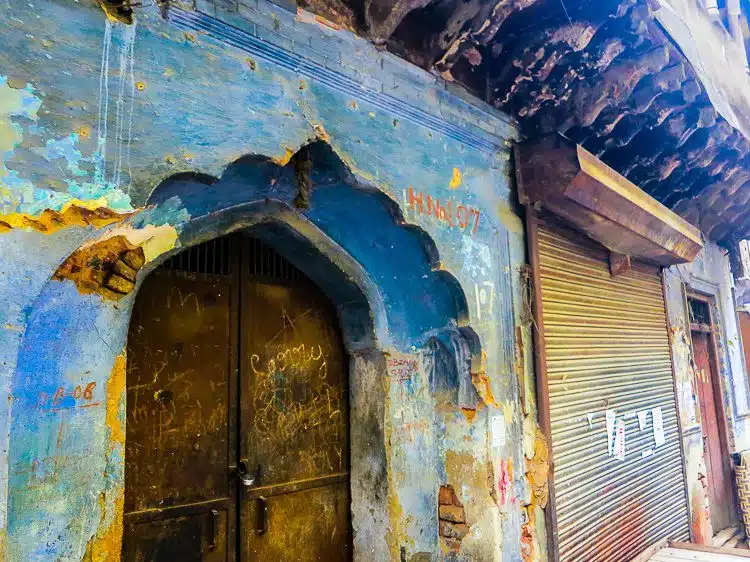
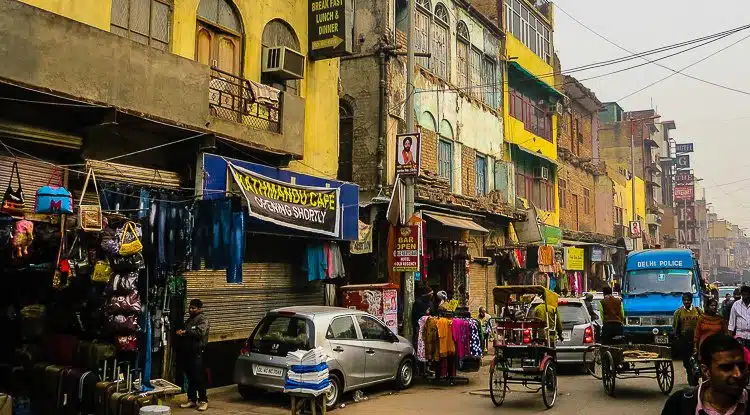
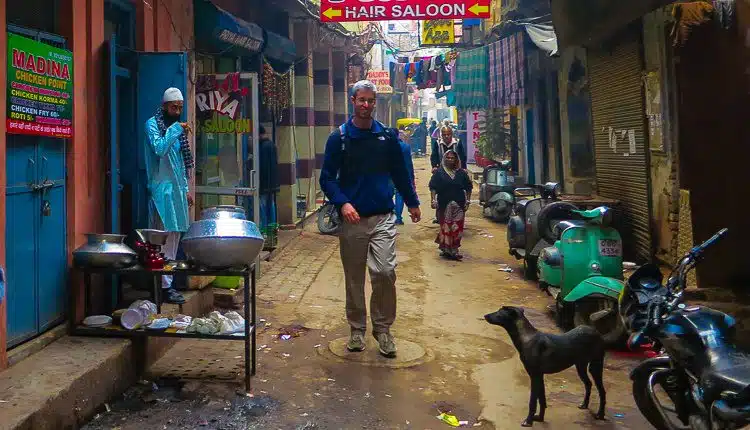
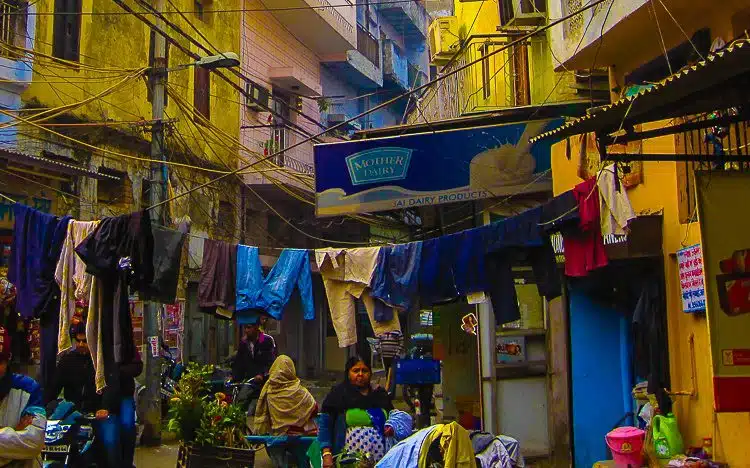
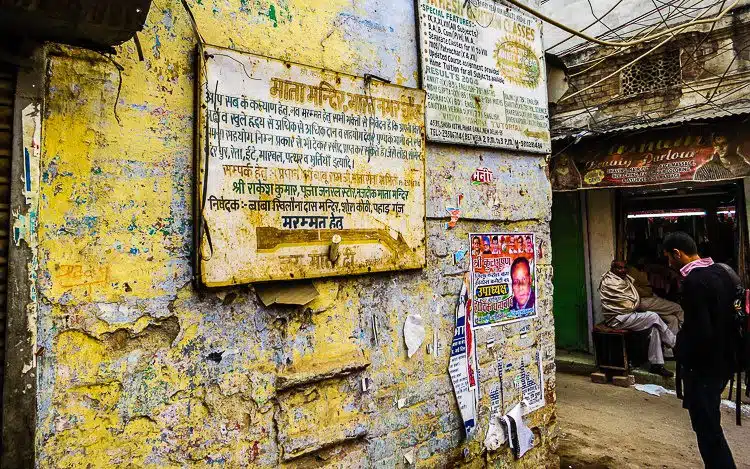
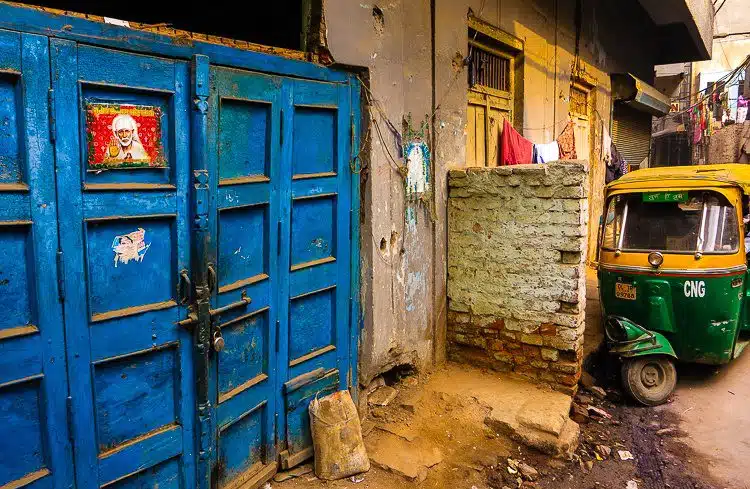
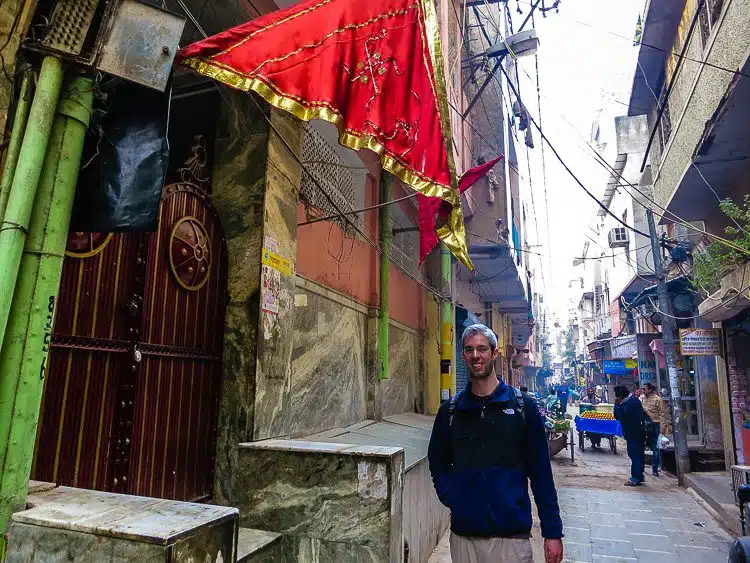
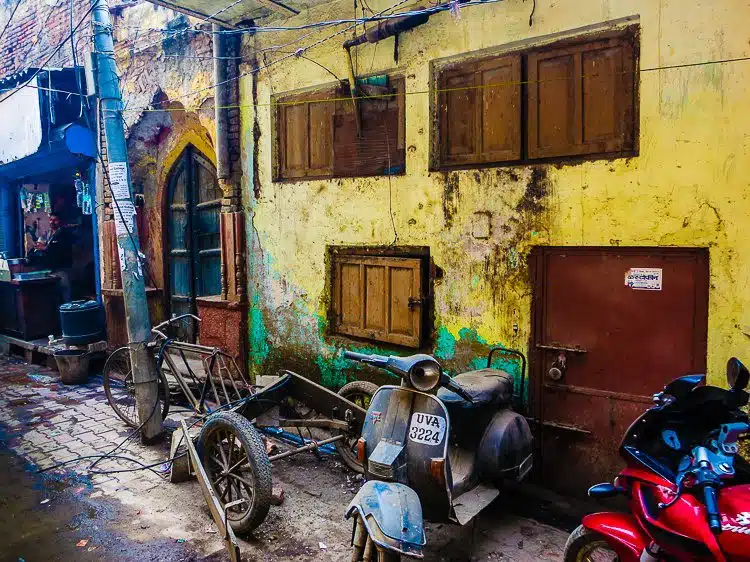
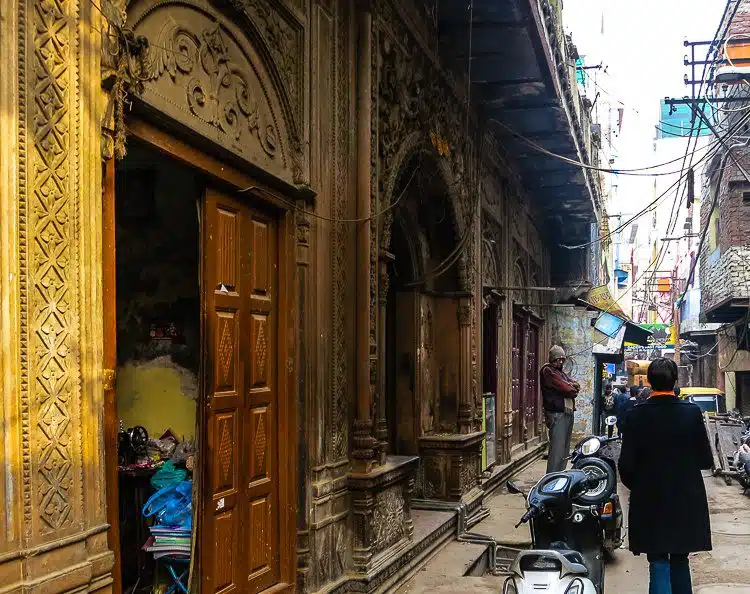
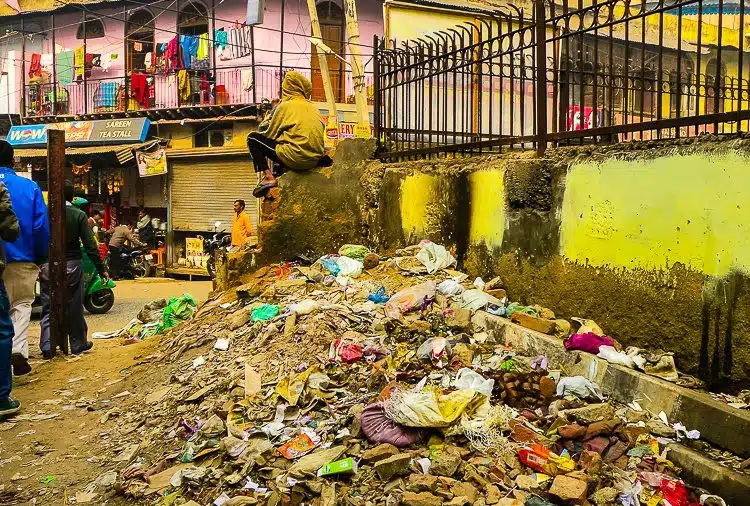

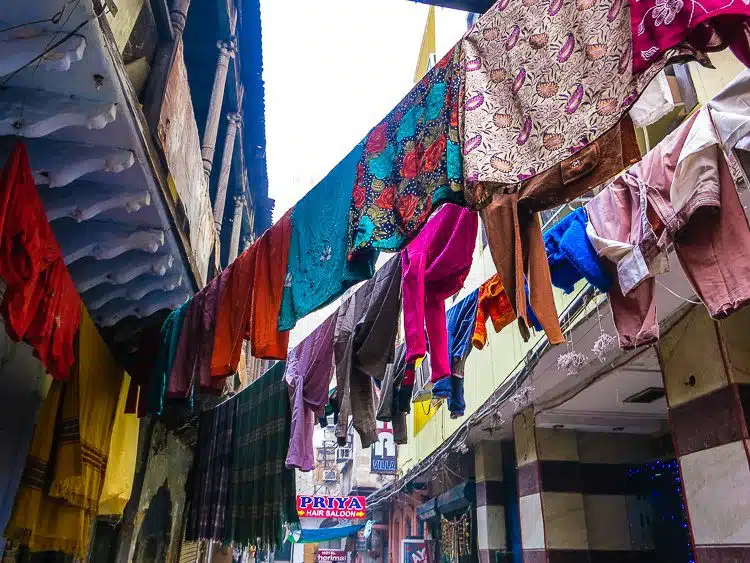
Nikhil
Saturday 19th of October 2013
Loved your perspectives and take on the garpage. The colors look really lovely. As a person living in Delhi, I have been to Paharganj a few time but never noticed these amazing colors.Now I could believe an old adage that one simply don't notice that which you come across everyday. These beautiful compositions of yours have just shaken me out of that slumber. This photo walk of yours is really a piece of art. Thanks to you next time I'll visit Paharganj I'll be differently abled as in view :-)
Lillie
Saturday 19th of October 2013
So glad!
shubhangi
Wednesday 15th of May 2013
I belong here..i am sad to see the piles of litter..but i am really happy you people appreciate the hidden art in my country.chheeerss.
Lillie
Wednesday 15th of May 2013
Thank you for sharing your perspective!
Deb
Sunday 10th of February 2013
No, I don't see litter as art. We stayed in the Paharganj area when we were in Delhi and it's not nice, it's not pretty and it's terribly polluted. I feel for the people of India who have to live in filth and trash. It's good that you showed this though, too many tourists close their eyes to problems but to answer your question, I don't look at trash and say that it is art and I don't find filth intriguing, I just find it sad.
Lillie
Sunday 10th of February 2013
I hear you!
Tracy Antoniolit
Saturday 26th of January 2013
So I recently started taking photos of alleys on my travels (and have started a whole blog series about it) and I have to say that the first photo in this post is EXACTLY what I was going for. Fabulous photos! I can even see past the garbage in the garbage photo to the riot of color that surrounds it. Love this.
Lillie
Saturday 26th of January 2013
Thanks, Tracy!
Micki
Friday 25th of January 2013
Wow - beautifully captured. What an assault on the senses - thanks for taking us along!